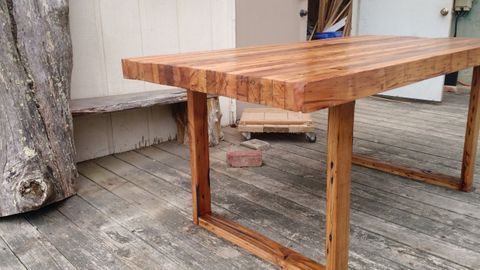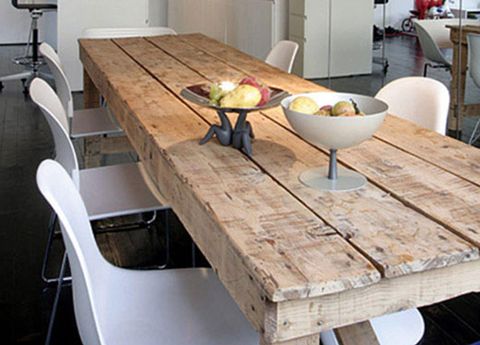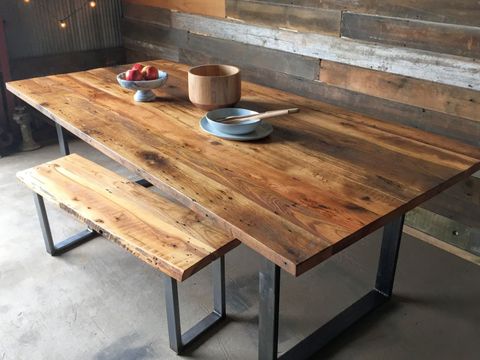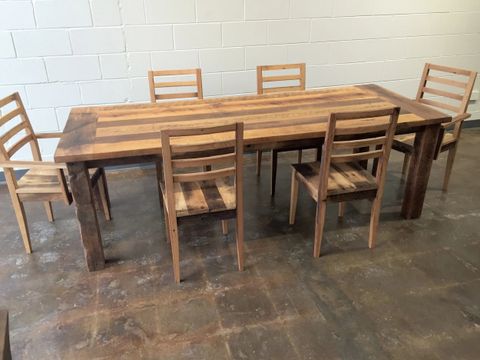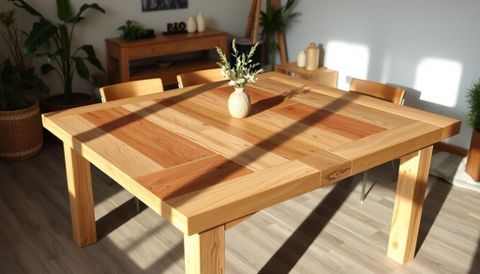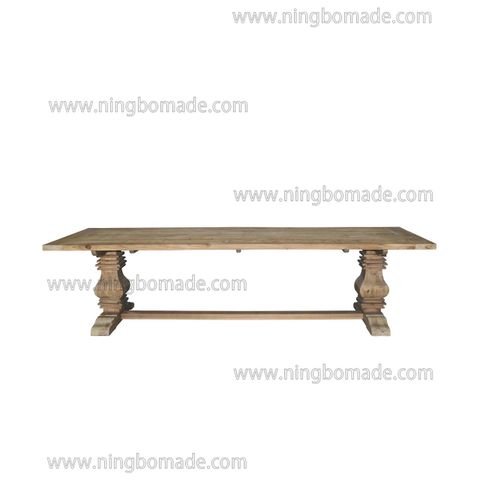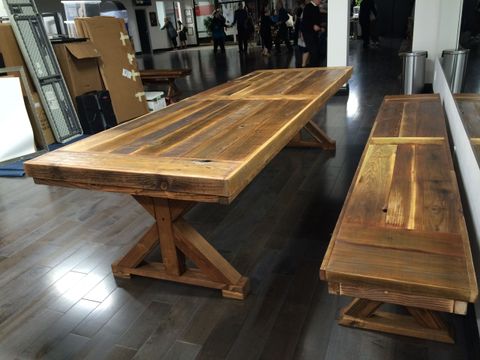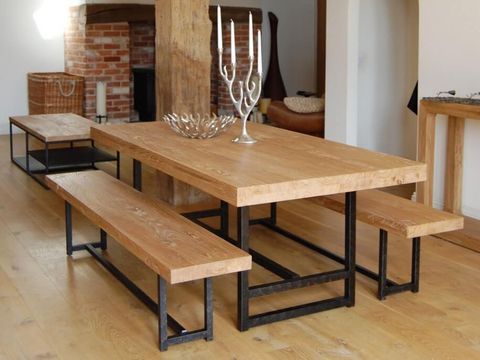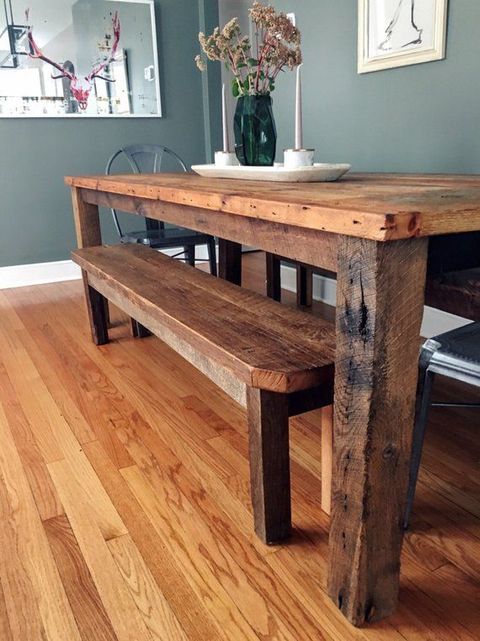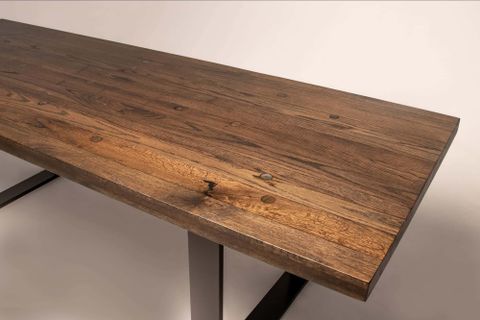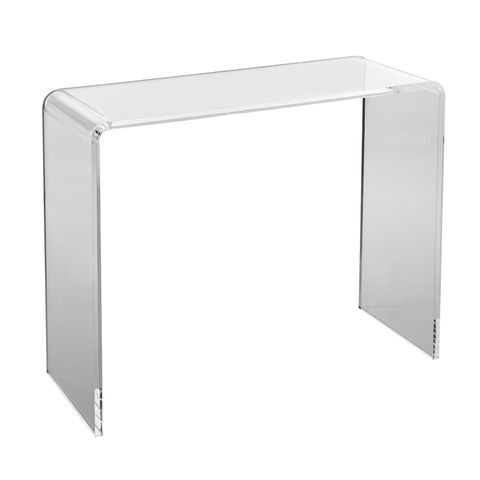Picture this: You’re sitting at a beautiful dining table, feeling good about your choice to dine sustainably. The grain patterns tell stories of old barns and forgotten forests. That’s the magic of reclaimed wood tables. They’re not just furniture – they’re statements about our values, our environment, and our desire to create meaningful spaces.
When you think about making your dining room more eco-friendly, what comes to mind? Maybe it’s organic plates or locally-sourced ingredients. But what if I told you the most impactful change could happen right at your table? It’s not just about what goes on the table – it’s about the table itself. Reclaimed wood tables have become a powerful symbol of environmental consciousness in modern dining spaces. These aren’t just trendy pieces; they represent a fundamental shift in how we approach consumption, design, and sustainability. What started as a niche market has grown into something mainstream, appealing to homeowners who want both beauty and responsibility in their living spaces.
What Makes Reclaimed Wood Special
Reclaimed wood isn’t just old lumber that’s been salvaged. It’s timber that’s been repurposed from buildings, barns, factories, and other structures that are being demolished or renovated. The process involves carefully extracting, cleaning, and preparing the wood for new life. Think about it – you’re giving a second chance to wood that might otherwise end up in a landfill. This isn’t just about saving trees; it’s about honoring the history embedded in every plank. The wood often features unique characteristics like nail holes, weathering marks, and natural imperfections that add character. These aren’t flaws; they’re the story of the wood’s previous life. The grain patterns tell tales of old growth forests, and the weathered surface speaks of decades of exposure to elements. Each table becomes a conversation piece that carries the memory of its former home.
Environmental Benefits of Choosing Reclaimed Wood
The environmental advantages of reclaimed wood are quite impressive. When you choose reclaimed wood over new timber, you’re avoiding the need to harvest fresh trees. This means less deforestation, less damage to ecosystems, and fewer carbon emissions associated with logging operations. Consider that it takes decades for new trees to reach maturity, while reclaimed wood is already seasoned and ready to use. The production process for reclaimed wood also uses significantly less energy than manufacturing new lumber. According to sustainable building experts, reclaimed wood projects can reduce embodied carbon by up to 75% compared to new materials. Additionally, you’re preventing wood waste from entering landfills, where it would decompose and release methane gas. This is particularly important because wood makes up a significant portion of construction waste. Every reclaimed table represents a small victory against the waste stream and a step toward a circular economy approach to materials.
The Aesthetic Appeal and Uniqueness
Let’s talk about how these tables look and feel. Reclaimed wood tables offer a warmth and character that’s hard to match with mass-produced alternatives. Each piece tells its own story through distinctive marks and variations in color and texture. Some pieces show the natural patina of weathered barn wood, while others might feature the rich amber tones of old oak beams. The beauty lies in the imperfections – those nail holes that tell stories of past construction, the slight warping that shows the wood’s natural movement over time, and the varying shades that create depth and visual interest. Unlike factory-finished pieces, reclaimed wood has an organic quality that feels alive. It’s not perfect, but that’s exactly what makes it appealing. The natural finish often highlights the wood’s original characteristics rather than masking them. Many people find that reclaimed wood tables create a sense of groundedness and authenticity in their homes.
Durability and Longevity Considerations
One common concern with reclaimed wood is whether it’s actually strong enough for daily use. The answer is yes – when properly sourced and treated, reclaimed wood tables can be incredibly durable. Many reclaimed pieces come from structural timbers used in buildings, which were specifically designed to bear heavy loads. The wood has already proven its strength through decades of service. However, it’s important to note that some reclaimed wood may have hidden weaknesses like insect damage or rot in certain areas. Quality reclaimed wood tables will have been carefully inspected and treated to address these concerns. The key is working with reputable suppliers who understand the material and can provide proper care instructions. Proper maintenance, including periodic oiling and protection from extreme moisture, will ensure these tables last for generations. Many reclaimed wood tables have been passed down through families, serving as heirlooms that combine functionality with historical significance.
Cost Considerations and Value Proposition
Reclaimed wood tables can vary widely in price, ranging from moderately affordable to quite expensive. The cost depends on several factors including the type of wood, the amount of work required, and the supplier. Generally speaking, reclaimed wood is often more expensive than standard lumber due to the labor involved in sourcing and processing. However, many people see this as a worthwhile investment for the unique qualities and environmental benefits. Some tables can cost 20-40% more than new wood alternatives, but the long-term value is significant. These tables often increase property value and serve as conversation starters that add personality to any space. The uniqueness factor means you’re unlikely to find an identical piece elsewhere, which adds to the overall value. Many buyers find that the aesthetic and ethical appeal makes the higher cost worth it, especially when considering the table’s potential longevity and the positive impact on the environment.
How to Choose and Care for Reclaimed Wood Tables
Selecting the right reclaimed wood table requires some research and attention to detail. Start by looking for pieces that have been properly processed – the wood should be clean and structurally sound. Check for signs of good treatment, such as proper sealing and finishing that protects against moisture and wear. Look for consistency in the wood grain and avoid pieces with obvious structural issues. Consider the intended use – if you have young children or pets, you might want to choose more robust options. For maintenance, reclaimed wood typically needs regular conditioning with appropriate oils to maintain its appearance and protect the surface. Avoid excessive water exposure and consider using coasters and placemats to prevent scratches. Many reclaimed tables benefit from periodic professional restoration to maintain their best condition. The key is treating these tables with the respect they deserve, understanding that they’re not just furniture but pieces of history with special care requirements.
Reclaimed wood tables represent more than just stylish furniture – they embody a growing awareness of our environmental impact and a desire to make conscious choices in our daily lives. Whether you’re drawn to their aesthetic appeal, their environmental benefits, or simply the stories they tell, these tables offer something special that mass-produced alternatives cannot match. As more people recognize the value of sustainable living, reclaimed wood tables continue to gain popularity as symbols of responsible consumption. They remind us that we don’t have to sacrifice beauty for ethics, and that every meal shared around a table made from reclaimed wood is a small act of environmental stewardship. In a world where sustainability matters more than ever, these tables serve as tangible reminders of our commitment to protecting the planet for future generations. The trend isn’t going away – it’s evolving into a core part of how we think about home furnishings and environmental responsibility.

